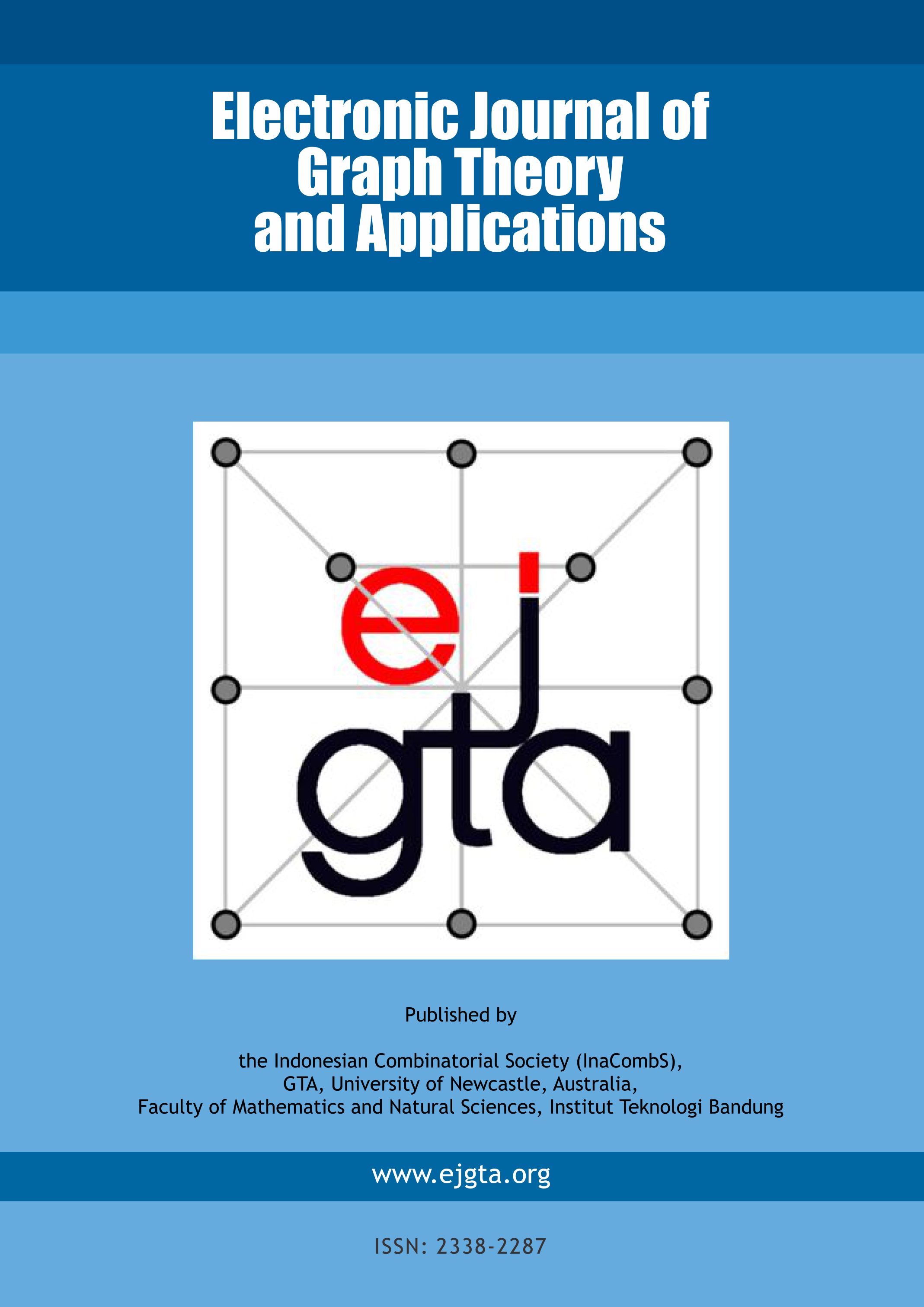Unique response strong Roman dominating functions of graphs
Abstract
Given a simple graph G=(V,E) with maximum degree Δ. Let (V0, V1, V2) be an ordered partition of V, where Vi = {v ∈ V : f(v)=i} for i = 0, 1 and V2 = {v ∈ V : f(v)≥2}. A function f : V → {0, 1, …, ⌈Δ/2⌉+1} is a strong Roman dominating function (StRDF) on G, if every v ∈ V0 has a neighbor w ∈ V2 and f(w)≥1 + ⌈1/2|N(w)∩V0|⌉. A function f : V → {0, 1, …, ⌈Δ/2⌉+1} is a unique response strong Roman function (URStRF), if w ∈ V0, then |N(w)∩V2|≤1 and w ∈ V1 ∪ V2 implies that |N(w)∩V2|=0. A function f : V → {0, 1, …, ⌈Δ/2⌉+1} is a unique response strong Roman dominating function (URStRDF) if it is both URStRF and StRDF. The unique response strong Roman domination number of G, denoted by uStR(G), is the minimum weight of a unique response strong Roman dominating function. In this paper we approach the problem of a Roman domination-type defensive strategy under multiple simultaneous attacks and begin with the study of several mathematical properties of this invariant. We obtain several bounds on such a parameter and give some realizability results for it. Moreover, for any tree T of order n ≥ 3 we prove the sharp bound uStR(T)≤8n/9.
Keywords
Full Text:
PDFDOI: http://dx.doi.org/10.5614/ejgta.2021.9.2.18
References
M.P. Alvarez-Ruiz, T. Mediavilla-Gradolph, S.M. Sheikholeslami, J.C. Valenzuela-Tripodoro, and I.G. Yero, On the strong Roman domination number of graphs, Discrete Appl. Math. 231 (2017) 44–59.
X.G. Chen and M.Y Sohn, Trees with equal strong Roman domination number and Roman domination number, Bull. Korean Math. Soc. (56) (2019), 31–44.
C.D. Godsil and B.D. McKay, A new graph product and its spectrum, Bull. Aust. Math. Soc. 18 (1) (1978) 21–28.
T.W. Haynes, S.T. Hedetniemi, and P.J. Slater, Fundamentals of Domination in Graphs, Marcel Dekker, Inc., New York (1998).
S.M. Hosseini Moghaddam, D.A. Mojdeh, B. Samadi, and L. Volkman, On the signed 2-independence number of graphs, Electron. J. Graph Theory Appl. 5 (1) (2017), 36–42.
N. Jafari Rad, A note on the edge Roman domination in trees, Electron. J. Graph Theory Appl. 5 (1) (2017), 1–6.
A. Mahmoodi, S. Nazari-Moghaddam, and A. Behmaram, Some results on the strong Roman domination number of graphs, Mathematics Interdisciplinary Research (5) (2020), 259–277.
D.A. Mojdeh, S.R. Musawi, and E. Nazari Kiashi, On the distance domination number of bipartite graphs, Electron. J. Graph Theory Appl. 8 (2) (2020), 353–364.
S. Nazari-Moghaddam, M. Soroudi, S.M. Sheikholeslami, and I.G. Yero, On the total and strong version for Roman dominating functions in graphs, Aequationes Math. 95 (2021) 215-236.
A. Poureidi, Total Roman domination for proper interval graphs, Electron. J. Graph Theory Appl., 8 (2) (2020), 401–413.
C.S. ReVelle and K.E. Rosing, Defendens imperium Romanum: a classical problem in military strategy, Amer. Math. Monthly 107 (7) (2000), 585–594.
R. Rubalcaba and P.J. Slater, Roman dominating influence parameters, Discrete Math. 307 (24) (2007), 3194–3200.
I. Stewart, Defend the Roman Empire!, Scientific American. 281 (6) (1999), 136–139.
D. B. West, Introduction to Graph Theory, Second Edition, Prentice-Hall, Upper Saddle River, NJ, (2001).
J. Xu and Z. Wang, Note on strong Roman domination in graphs, Appl. Math. Sci. 12 (2018), 535–541.
Refbacks
- » —
ISSN: 2338-2287

This work is licensed under a Creative Commons Attribution-ShareAlike 4.0 International License.



